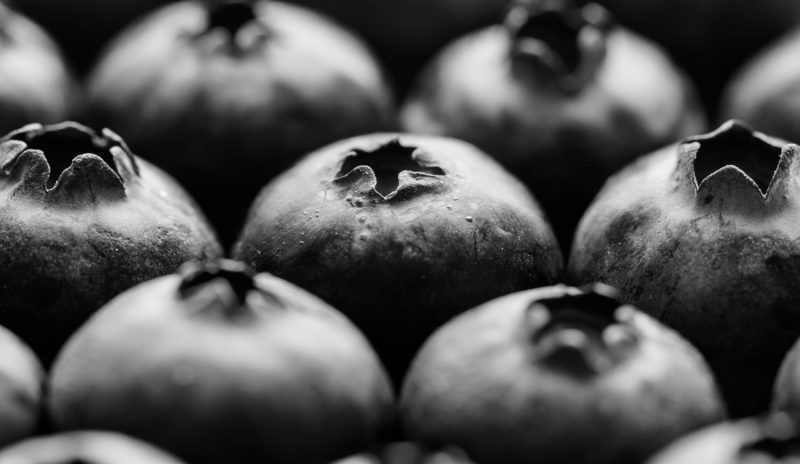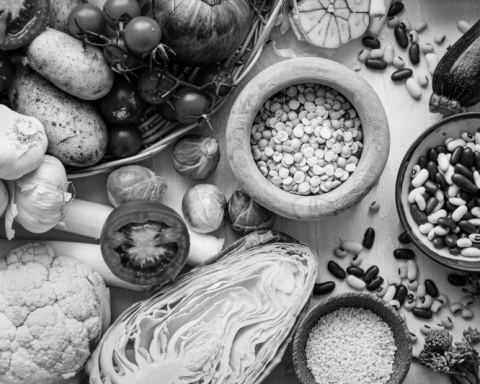In our fast-paced society, navigating the complex landscape of food choices becomes challenging and overwhelming. The dichotomy between conventional and organic food options introduces significant health and well-being considerations.
Amidst the seemingly boundless choices, possessing the right knowledge becomes indispensable. Developing the optimal diet and lifestyle is made more difficult by the continuous discussion over organic vs non-organic food choices.
Whether opting for the perceived health benefits of organic produce or navigating the reality of higher prices, the decision-making process involves weighing factors such as nutrition, pesticides, and cost.
So, is “organic food” really healthier? This article will examine the differences between organic and conventional foods and discuss tips and tricks for combining organic and non-organic foods to achieve a balanced diet.
Understanding organic and conventional food
While most people believe that organic meals have higher levels of positive nutrients and lower pesticide residues, others argue that the differences are minimal and might not drastically impact health.
Deciding between organic and conventional meals is vital to the general discussion about preserving a healthy diet. In the long run, it’s no longer just about the meals you eat but about making smart selections that benefit your physical and economic health.
Organic food production
Organic refers to a method of food production for specific sorts of food without synthetic chemicals, hormones, antibiotics, or genetically modified organisms (GMOs). Organically farmed crops often use natural fertilizers like manure to grow food.
The growth in global demand for organic food over the past years proves the significant consumer interest in organic food. Some studies have found that this trend happened due to several factors.
Emphasizing values that reflect motives from ethical or green consumerism and social benefits may promote consumers’ drive to purchase more organic food. Besides that, health values and health consciousness had a considerable impact on healthy eating beliefs, which, in turn, positively affected personal norms and consequence awareness.
Conventional vs. organic: nutritional comparison
Many people consider aspects like taste, cost, and convenience when choosing food. However, a growing percentage of customers are now considering the nutritional value of their food.
Read more: How to Meet Nutritional Needs Despite a Busy Schedule
Despite consumers’ perception that organic food is more nutritious and has higher amounts of beneficial antioxidants, research has consistently shown that there are no significant differences in nutritional value between organic and non-organic food.
Consumers commonly believe that organic food is safer and more nutritious. However, research does not support this claim, and in fact, there is limited evidence to suggest that organic food provides any substantial additional health benefits compared to non-organic food.
Myths about organic food
Most people choose organic food to avoid antibiotics or pesticides for health reasons, but is that really the case? Here are some typical myths about organic food.
Organic always means pesticide-free
The reality is that even fruits and vegetables grown organically may contain pesticides. In some situations, products grown organically could have received numerous pesticide applications before they were placed on store shelves. Pesticide residues on both conventional and organic food have undergone pesticide treatment.
Consumers need to recognize that while choosing organic products can reduce exposure to synthetic pesticides, it does not guarantee a completely pesticide-free experience.
Regularly washing and thoroughly cleaning fruits and vegetables remains a prudent practice to minimize potential pesticide intake, regardless of their organic or conventional origin.
Organic foods are more nutritious
No study could conclusively demonstrate that organic food has more nutritional value than non-organic food up until now. According to current research, there is no distinction or variety in nutrients found in organic and non-organic products.
An organic label means 100% organic food
According to the USDA (United States Department of Agriculture), organic means 95% of the ingredients are organic, with the remaining 5% open to “allowable” compounds from the USDA national list of approved substances. Other guidelines for organic produce include the following:
- Synthetic compounds are permitted in organic crop production
- Non-synthetic compounds are not permitted in organic agricultural cultivation/livestock production/processing
- Synthetic chemicals are permitted in organic livestock production.
Thus, the phrase “made with organic ingredients” implies that at least 70% of the ingredients must be organic.
The remaining 30% contains non-organic components and synthetic compounds that are generally permitted in regular food and fiber manufacturing. Products containing fewer than 70% organic ingredients must list only the organic ingredients on the ingredient panel, not the major panel.
Cost considerations
Organic products have been demonstrated to incur higher costs for various items — a survey has revealed that organic foods tend to be approximately 21% pricier than their non-organic counterparts. However, this price difference narrows to about 10% when excluding meat from the comparison.
Read more: Transform Your Finances With Practical Expense-Cutting Tips
Additionally, the researchers observed that organic food pricing remains unaffected by the choice of supermarkets. Thus, opting for organic food at a more budget-friendly grocery store may not yield significant advantages for individuals who are exclusively buying organic products. To address this, consider the following tips for making organic choices more economically viable:
Focus on priority foods
Some families might find it hard to afford all organic food. It’s better to prioritize purchases to reduce pesticide exposure. For example, mushrooms and asparagus have minimal pesticide residue from standard farming methods. But some products have thin skins — they don’t have as much of a protective barrier against pesticides like (strawberries, spinach, apples, and grapes), so buy those in organic forms.
Purchase in-season produce
Due to higher production and shipping expenses, out-of-season organic food is more costly, which can be difficult on your wallet. Additionally, choosing in-season organic foods promotes regional agriculture and lowers the carbon emissions linked to long-distance travel, making it a more environment-friendly decision.
Explore store brands and discounts
Several supermarkets provide their own organic brands, which are frequently less expensive than well-known organic brands. To cut costs on organic items, keep an eye out for deals, discounts, and bulk purchases.
Making informed food choices
Fruits and vegetables are categorized using terms like “Dirty Dozen” and “Clean Fifteen” based on pesticide levels.
Dirty Dozen
The “Dirty Dozen” are high-pesticide items like strawberries, apples, grapes, bell peppers, and spinach. Items under this category also have thin skin and are more likely to absorb pesticides into them. So, to reduce pesticide exposure, consumers are encouraged to consider organic alternatives to the products on the “Dirty Dozen” list as follows:
- Strawberries
- Spinach
- Kale, collard & mustard greens
- Peaches
- Pears
- Nectarines
- Apples
- Grapes
- Bell and hot peppers
- Cherries
- Blueberries
- Green beans
Clean Fifteen
By comparison, the “Clean Fifteen” lists fruits and vegetables with fewer pesticide residues, making them safer options. Products with thicker skins or peels, which act as a natural barrier against pesticides, are usually included in the “Clean Fifteen,” like sweet corn, onions, avocados, and pineapples. However, even if these products have fewer pesticide residues, consumers should still be aware of potential pesticide hazards. The list consists of:
- Avocadoes
- Sweet corns
- Pineapples
- Onions
- Papayas
- Sweet peas (frozen)
- Asparagus
- Honeydew melons
- Kiwis
- Cabbages
- Mushrooms
- Mangoes
- Sweet potatoes
- Watermelons
- Carrots
Manufacturers use many marketing buzzwords to increase sales, but even the term “natural” does not guarantee that a product is free of genetic engineering, synthetic fertilizers, or pesticides. Instead, to make informed decisions, look for the USDA Organic designation.
In conclusion
You must understand the debate between organic versus conventional food from a distinctive attitude rather than popular myths. Thus, readers have to understand the issue inside and out. This article provides the insights and information necessary for that. This article discusses what organic food actually is, the myths surrounding them, and how consumers should navigate around cost.
Ultimately, people should look at their priorities and values. By preserving a balance among those elements, consumers could make healthier choices that create a sustainable and ethical food system. As you discover the shops, consider how your choices will impact your surroundings and health.
This small but significant change in your shopping behaviors actively supports the larger drive towards a sustainable and ethical food sector and leads to a better lifestyle.
If you would like to see more resources on nutrition in meal preparation, check out the Household Management Science Labs. The lab uses the research of the Institute for Life Management Science to produce courses, certifications, podcasts, videos, and other tools. Visit the Household Management Science Labs today.
Photo by rawpixel.com on Freepik



